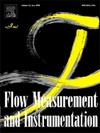用卷积神经网络表征超声后向散射产生的悬浮微粒
IF 2.3
3区 工程技术
Q2 ENGINEERING, MECHANICAL
引用次数: 0
摘要
超声后向散射已广泛应用于许多应用中,以表征悬浮颗粒。它在核退役中特别有趣,因为它允许在线表征,而不需要采样,甚至在某些情况下接触悬浮液。工业过程通常利用悬浮颗粒浓度和粒径分布(psd)的动态变化,因此,同时描述两者将是有利的。目前,在现有的分析方法中,实现这一点的范围有限,其中必须知道目标系统的浓度或PSD才能计算另一个。机器学习(ML)是一种方法,当在代表性数据上训练时,可以使用非线性多变量最小化来同时估计浓度和PSD,因此,本研究旨在证明人工神经网络(ANN)和卷积神经网络(CNN)可以实现这一点。使用商用背向散射仪器在2和4 MHz频率下编制了6种浓度下9个球形玻璃珠悬浮系统的训练库,包括可变中值粒径和变异系数。ANN和CNN的超参数在这些声学剖面上进行了优化,然后用于预测两种“未知”悬浮液在2和4 MHz下的声学剖面的中值粒径、变异系数和浓度。虽然ANN和CNN的预测在估计变异系数方面都不成功,但从ANN得到的中位粒径和浓度的预测值和真实值之间存在中等程度的一致性,而CNN在预测颗粒浓度时获得了很好的中位粒径一致性和非常好的一致性。因此,本研究能够成功地确定CNN可以同时估计中值粒径和浓度,使用在“未知”悬浮液上收集的超声波后向散射数据。本文章由计算机程序翻译,如有差异,请以英文原文为准。
Convolutional neural networks to characterise particle suspensions from ultrasonic backscatter
Ultrasonic backscatter has been used extensively across many applications to characterise suspended particles. It is of particular interest in nuclear decommissioning, as it allows online characterisation without the need to sample, or even contact the suspension in some cases. Industrial processes often utilise dynamic changes to suspended particle concentrations and particle size distributions (PSDs), and as such, characterisation of both simultaneously would be advantageous. At present, there is limited scope within existing analytical methods to achieve this, where the concentration or PSD of the target system must be known to calculate the other. Machine learning (ML) is a method that when trained on representative data, can use non-linear multi-variable minimisations to estimate both concentration and PSD simultaneously and, as such, this study aims to demonstrate that an artificial neural network (ANN) and convolutional neural network (CNN) can accomplish this. A training library of nine spherical glass bead suspension systems, comprising of variable median particle size and coefficient of variation, across six concentrations was compiled using a commercial backscatter instrument at 2 and 4 MHz. The hyperparameters of an ANN and CNN were optimised on these acoustic profiles, before being used to predict median particle size, coefficient of variation, and concentration from acoustic profiles at 2 and 4 MHz of two “unknown” suspensions. While neither the ANN or CNN predictions proved to be successful for estimating the coefficient of variation, moderate agreement between predicted and true values were found for median particle size and concentration from the ANN, while the CNN achieved good agreement for median particle size and very good agreement when predicting particle concentration. Consequently, this study was able to successfully determine that a CNN could simultaneously estimate a median particle size and concentration using ultrasonic backscatter data gathered on an “unknown” suspension.
求助全文
通过发布文献求助,成功后即可免费获取论文全文。
去求助
来源期刊

Flow Measurement and Instrumentation
工程技术-工程:机械
CiteScore
4.30
自引率
13.60%
发文量
123
审稿时长
6 months
期刊介绍:
Flow Measurement and Instrumentation is dedicated to disseminating the latest research results on all aspects of flow measurement, in both closed conduits and open channels. The design of flow measurement systems involves a wide variety of multidisciplinary activities including modelling the flow sensor, the fluid flow and the sensor/fluid interactions through the use of computation techniques; the development of advanced transducer systems and their associated signal processing and the laboratory and field assessment of the overall system under ideal and disturbed conditions.
FMI is the essential forum for critical information exchange, and contributions are particularly encouraged in the following areas of interest:
Modelling: the application of mathematical and computational modelling to the interaction of fluid dynamics with flowmeters, including flowmeter behaviour, improved flowmeter design and installation problems. Application of CAD/CAE techniques to flowmeter modelling are eligible.
Design and development: the detailed design of the flowmeter head and/or signal processing aspects of novel flowmeters. Emphasis is given to papers identifying new sensor configurations, multisensor flow measurement systems, non-intrusive flow metering techniques and the application of microelectronic techniques in smart or intelligent systems.
Calibration techniques: including descriptions of new or existing calibration facilities and techniques, calibration data from different flowmeter types, and calibration intercomparison data from different laboratories.
Installation effect data: dealing with the effects of non-ideal flow conditions on flowmeters. Papers combining a theoretical understanding of flowmeter behaviour with experimental work are particularly welcome.
 求助内容:
求助内容: 应助结果提醒方式:
应助结果提醒方式:


